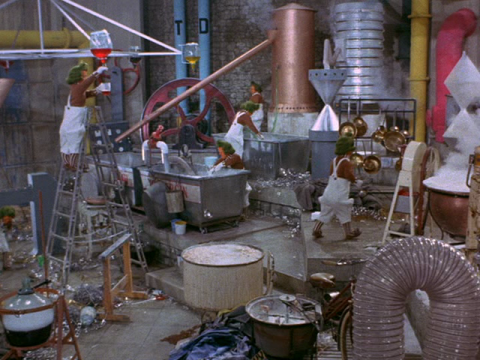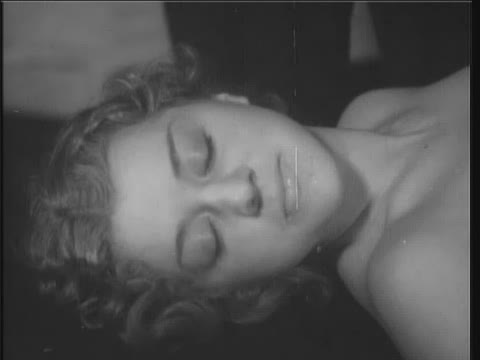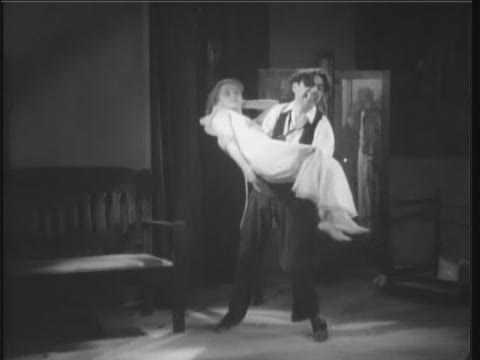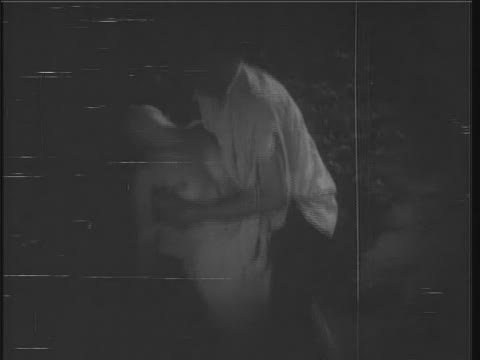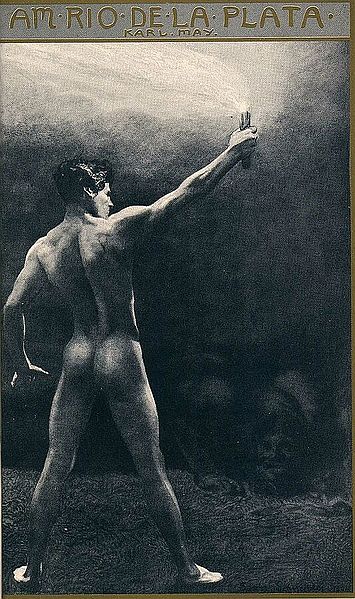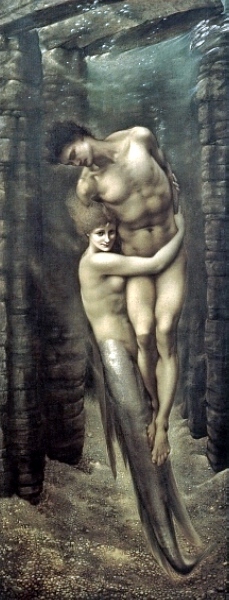If you were to ask someone to name a mad scientist you’d be unlikely to get the answer “Willy Wonka.” What an injustice! Because in many ways Wonka is just much a mad scientist as Dr. Frankenstein or Rotwang. He isolates himself from society, surrounds himself with grotesque assistants, and experiments away endlessly with bizarre substances which can have truly radical effects on those who consume them, wittingly or not. Also, like a mad scientist, his morality is rather at variance with accepted social norms: surely no normal person would allow children to play around in close proximity to a variety of near-death traps into which they fall, repeatedly, right in front of their horrified parents.
And also, try looking at the cinematic versions of Willy Wonka’s invention workshops and just try telling me that you’re not looking at an imaginatively arranged mad lab. Here is the 1971 version:
And the 2005 version…
If that’s not mad science in action, I’ll eat a case of Slugworth‘s.
But does any of this belong at Erotic Mad Science? I mean, these are children’s movies, right?
Only half right. These works might have been largely intended for children, but they clearly left impressions in the minds of young viewers which weren’t erotic experiences at the time they were seen, but which lingered and would eventually become fetish fuel — things not erotic in themselves (at least, not intended that way and probably not seen that way by most viewers), but which would eventually form the visual or conceptual anchors of fantasy. Fetish fuel is a concept I’ve implicitly worked with before, in the context how an old monster movie might have affected people’s sexual imaginations. I shall be posting on a few examples of it in the Willy Wonka/thaumatophile context over the coming week.

